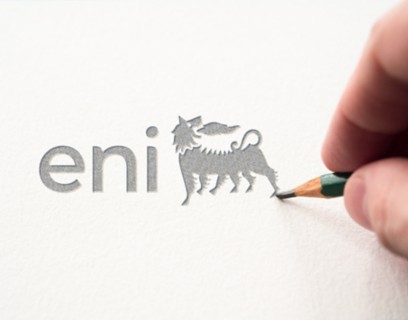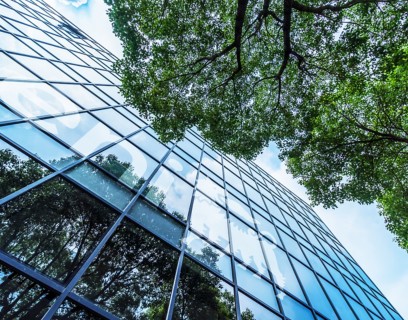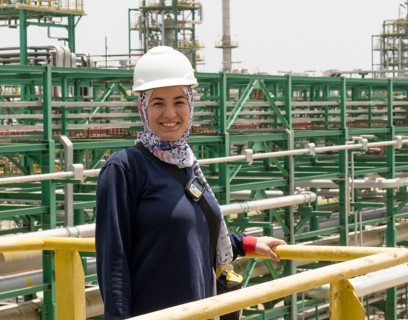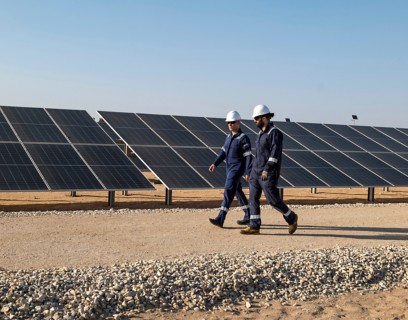- SUSTAINABILITY

MyEni Login
Paris, 30 September 2016 – Today, Eni’s CEO, Claudio Descalzi, will present the evolution of Eni’s model for sustainable energy resource development to the financial community, along with the new company mission.
Future challenges and Eni’s model
The key challenge for the energy sector is to achieve a balance between maximizing the access to energy and fighting climate change.
If the global temperature increase is to stay below 2o , we cannot satisfy the increasing energy demand and give access to energy with current energy mix, considering that 2/3 of the world’s carbon budget has already been used. Therefore the challenge is to change the energy mix and to reduce our carbon footprint.
In light of these challenges, Eni’s model is built on financial robustness as well as social and environmental sustainability, through competences and innovation, risk management and compliance, and leveraging:
- A unique cooperation and development model in countries where we operate;
- An operating model that minimizes risk and social and environmental impact;
- A clear and defined path to decarbonisation.
Eni’s cooperation model
Eni’s cooperation framework supports local development, seeks to minimize socio-economic gaps and involves all stakeholders.
In this sense, Eni’s attention is focused on production for the domestic market, spread of access to electricity, diversification of the energy mix and of local economies, transfer of know how and technology and local development in health and education.
Eni, in particular, decided to develop energy sources not just for export, but also for the supply of local populations. For example, in the Mediterranean region, Eni provides almost all the gas necessary to supply Libyan power plants, more than 5 billion cubic meters per year covering all power needs. In Egypt, where the entirety of Eni’s gas production already stays in the country, the company will help to create the conditions for energy independence, thanks to the development of the new giant Zohr discovery. Eni is selling its gas production domestically in 14 countries, at a total volume of 43 billion cubic meters per year, and in 10 countries it delivers its entire production for local consumption.
Of all the IOCs, Eni is the leading power producer in Sub-Saharian Africa, improving access to energy for local populations while benefitting the environment through the reduction of gas flaring.
Outside the energy sector, Eni promotes local projects, helping to diversify countries’ economies and supporting agricultural programs. In the period 2010-2015, the company has invested around 600 million dollars in supporting more than 4 million people through agricultural projects, improving access to water, health care and education. In the next four years Eni expects to maintain the same investment.
Another aspect of Eni’s cooperation model is its commitment to the development of local skills. In the last five years, Eni has increased the proportion of local employment by more than 21% and on average the level of local employees in its consolidated affiliates has reached around 80%.
Eni’s operating model
Safety and the environment are at the top of Eni’s priorities within its operating model. For the last three years Eni has been the best performer in the industry on injury rates. In 2015 the company’s Total Recordable Injury Rate was equal to 0.45, which was significantly lower than the peer average of 1.3, with the target being to reach an injury level of zero.
In term of environmental protection, Eni is also improving all its performances and indices: the company cut flared gas by 3/4 compared to 10 years ago with the target being zero routine flaring by 2025.
Eni’s strategy in exploration, which represents the engine for the company’s future growth, is a fundamental pillar of its operating model. Eni strengthened its exploration organization and strategy. With the aim to manage exploration activities with a more entrepreneurial spirit, giving more weight to competences, fitting closer with the rest of its upstream strategy, which is pointed at optimizing time to market in developing discoveries, Eni built a balanced exploration portfolio with a proper mix of near field exploration opportunities and few frontier initiative, providing the company with a fast time to market and the volumes that will provide the base for reserve replacement and long term production growth.
In the last eight years, Eni has discovered around 12 billion barrels of resources at a unit cost of 1.2$ per barrel, discovering 2.4 times what we produced in the period, far above the peer average of 0.3.
Eni’s development model includes a close integration among all the upstream disciplines, which allows fast-tracking resources into reserves. In order to mitigate risks associated to development activities, to reduce costs and to enhance the time to market, Eni pursue a phased approach with a strict control on project execution, resulting in an average upstream cost of the new projects from 30$ per boe level of 2014 to around 20$ per boe.
Path to decarbonisation
Eni’s long-term integrated strategy for decarbonization is based on:
- Lowering CO2 emissions and enhancing efficiency in all of Eni’s operations. The company has already reduced its direct CO2 emissions by 28% since 2010 and aims for targets zero routine flaring by 2025 and an overall 43% reduction of emissions per barrel produced.
- Aiming to preserve a low-carbon portfolio and to promote the use of natural gas as a bridge fuel for electricity generation and for transport.
- Spreading the development of renewables in the countries in which it operates, whilst stimulating technological research.
Combining gas and renewables is the ideal bridge to a low carbon future and it is the best solution towards the elimination of coal from power generation.
The promotion of gas is key in our decarbonization strategy. According to the IEA scenario, energy global demand will have increased by 21% in 2030, with respect to the current levels, with coal playing a major role in the energy mix satisfying 20% of total demand with renewables satisfying just 4%. This will cause a further increase of total emissions from 32 Gton in 2013 to 35 Gton in 2030.
The best partner with which renewable energy can build a sustainable future is gas. From an environmental perspective, gas-fired power plants are more efficient, producing about a half the CO2 emissions of a coal plant; in terms of costs, gas is a highly competitive resource as well as being reliable and secure. Gas is therefore the best energy source as it can supply power systems with considerable flexibility. Gas is also largely available and easily accessible. Today, 58% of Eni’s portfolio is made up of gas.
Last year Eni created the department named Energy Solutions for the implementation of the renewables strategy. Eni has developed an original business model, based on distinctive, competitive skills. First of all, Eni’s global presence and large portfolio of industrial assets, providing the company with a large number of opportunities both from a geographical and a technological point of view. Secondly, the company possesses the know-how in managing large scale projects in a number of different domains, from upstream to downstream, to power generation. Thirdly, Eni’s excellence in Research & Development; finally, the company possesses the capacity to activate multiple and flexible financial levers, according to type of projects and location.
Recently, Eni launched a number of large-scale renewable energy projects, both in Italy and internationally. In Italy, the company has started an important initiative called “Progetto Italia”, whose objective is to make use of Eni’s industrial land in order to implement renewable energy projects: Eni has identified about 15 projects so far, with a total capacity of around 220 MWp, which is mainly photovoltaic. These will be installed before 2022. Outside Italy, Eni has already started utility-scale photovoltaic projects in Pakistan, Egypt and Algeria, with a total planned capacity of around 160 MWp, to be completed by 2018. Eni plans to take six Final Investment Decision (FID) by the end of this year, at a total capacity of about 150 MWp. These plants will be completed and connected to the grid between end of 2017 and the beginning of 2018. In terms of avoided emissions, the current portfolio of projects will save about 0.3 Mtons of CO2 per year for the next 20 years.
Eni’s Ceo, Claudio Descalzi, concluded the presentation describing Eni’s new mission, which includes the fundamental principles of the company’s model:
“We are an energy company.
We are working to build a future where everyone can access energy resources efficiently and sustainably.
Our work is based on passion and innovation, on our unique strengths and skills, on the quality of our people and in recognising that diversity across all aspects of our operations and organisation is something to be cherished.
We believe in the value of long term partnerships with the countries and communities where we operate.”
Investor Relations
Freephone for shareholders (from Italy): 800940924
Freephone for shareholders (from abroad): + 80011223456
Eni.com is a digitally designed platform that offers an immediate overview of Eni's activities. It addresses everyone, recounting in a transparent and accessible way the values, commitment and perspectives of a global technology company for the energy transition.
Discover our mission

















